Preview: Joram Roukes – American Ornithology @ Thinkspace Gallery [Culver City]
The Netherlands painter’s latest exhibit blends his fascination for birds, American popular culture, and painting as it has evolved in this stage of his life

Oil on linen
73″ × 72″
I see a fairly decent amount of art come through and, sometimes, it can definitely be difficult to grab my attention, but if that’s something that you’re aiming to accomplish, I can guarantee you one thing: painting a crew of “hooligans” stomping around on top of a squad car isn’t a bad place to start. The interpretation, of course, is dependant on the individual viewing the piece — I, immediately, respond positively to implied destruction, while plenty of others will likely react with disgust and judgment to the imagery — but the energy radiating from such a piece is undeniable. But, if we’re discussing the oil painting “Medusa’s Raft” (pictured above) by Netherlands artist, Joram Roukes, specifically — which, I clearly am — then there are a few more elements to consider. Most notably of these is the fact that the heads of at least 3 of the 5 culprits are those of animals.
With a crotch grab and a middle finger in the air, a pair of men with bird heads enthusiastically celebrate while mounted victoriously toward the back of the vehicle. A less jovial and more reserved/stoic figure stands slightly closer on the hood; a bull from the neck up, his body faces to the side, with an apprehensive, if not menacing, gaze pointed toward both the viewer and the 2 additional figures climbing up the hood of the car approaching him. These newcomers are only shown from the back with the closest of them donning a hood pulled up over his dome. It is unknown if they have human faces or otherwise; they are unidentifiable, but they are not law enforcement. In fact, they appear to be peers joining the others on top of the cruiser, but there’s something about their energy that is hard to peg. The climber positioned closest to us is sporting Baltimore Orioles gear, just like 2 of the men already stationed on top of the car, but he’s also brandishing his weapon of choice: a hefty piece of wood that falls somewhere between a log and a massive branch. There is a clear passion and hurried enthusiasm in their movements, but it’s difficult to discern whether it’s born of the same sort of light-hearted delusion that motivated the birdmen to relax into dance mode amidst obvious chaos, or if it stems from a much more physically aggressive and destructive place. Is the bull justifiably apprehensive of them, or is he actually welcoming their arrival? Is this even really a police vehicle that they’re stomping around on, or a representation of one? — there are no real markings left on it other than the emergency vehicle lights.
With the imagery clustered together in a central point, hovering within primarily “empty” space, “Medusa’s Raft” is strongly representative of Joram‘s style and his latest work in particular. By avoiding framing these scenes with more traditional environments, the narratives are much less overt and the context remains open for interpretation on a more emotional level than a cerebral one. Anyone could force abstract shapes and imagery into a scene for the sake of “art,” but Roukes applies a certain level of skill and precision to his impressionistic splashes of color. His pieces can unfold in an incredibly satisfying and organic way, and, with this painting, for example, it’s easy to see how a splash of orange to the right of the car might represent fire, while the red in the picture actually resembles smeared blood — in other paintings, implications of skylines, clouds, water, or smoke may appear. But while the emotional relationship with the work trumps any intellectual analysis and the questions are more vital than sterile and definitive perspectives, there are at least 2 definitive conclusions that can be reached regarding “Medusa’s Raft;” this painting has some incredibly direct references. The first is that the Orioles clothing, along with the oriole heads, is a nod to the city of Baltimore and, more specifically, the reported Baltimore riots that grew out of initially peaceful protests honoring 25-year-old, Freddie Gray, who died in police custody, earlier this year. In fact, it’s pretty much a recreation of an actual photo that appeared in news coverage after the event; although none of the actual men were sporting Orioles gear, there were major reports of physical conflicts occurring between protestors and those leaving the baseball game that day. Then there’s the title, which is a variation on The Raft Of Medusa (aka Le Radeau de la Méduse), the iconic life-sized oil painting by french artist, Théodore Géricault from 1819. Géricault‘s work depicted an incredibly controversial incident from his own time involving the wreck of a naval ship that resulted in the captain abandoning 147 people on a janky, partially submerged makeshift raft on which all but 15 died over a 13-day period, while falling victim to everything from starvation and dehydration to cannibalism; their plight widely blamed on the French government.
What’s fascinating is that Joram Roukes‘s pseudo-depiction of Baltimore actually provides more dimension than the original reference photo; each figure coming across as an individual with, potentially, different, individual motivations — the removal of their human heads, somehow, actually, infusing them with more humanity. It’s difficult to determine who’s a friend of who, or what the fuck is happening, only that they are all within the same chaotic situation, but not why or how they got there. Géricault‘s “Medusa” is piled with both victims and perpetrators, individuals reacting instinctively to the particulars of their own dire circumstances. Is this the connection that Roukes intended to make between the two pieces? In this instance, their version of the sinking raft is actually a busted up “rescue vehicle.” Are those who aren’t pictured outside of the frame in danger, or an extension of those on the car? Even without any specific knowledge of any riots, or of a French painting from the 1800s, the work is effective, and the absurdity of their animals heads, somehow magnifies that.
This weekend, San Francisco‘s Thinkspace Gallery presents American Orinthology, the latest collection of of large scale work by Joram Roukes. The artist elaborates on the meaning behind the exhibit title as follows:
“As a kid I used to go bird-watching relentlessly. My granddad and my parents would take me out to this national park by our house or we’d go on hikes in France when we were out there camping during summer vacations. I learned a lot about birds. everything basically. And as I started drawing, I mostly drew birds. For this show I wanted to bring those three things together: My fascination for birds, American popular culture, and painting as it has evolved in this stage of my life. The series in a way is a result of watching my current environment through an ornithologists view.”
There’s a basic essence that Roukes appears to be tapping into and presenting through his work and it’s that core essence that truly shines through. The remainder of the paintings featured in the exhibit are typically much less straightforward, reference-wise, presented as collages of disparate imagery stacked and mangled together. But while collage work has, historically, often been defined by the combination of various different source images and/or content to create a brand new, cohesive, and unified image, these paintings take somewhat of an alternate route. Not only are disparate components that the artist combines painted fresh, rather than “sourced” — at least, not in a physically sense — they work to fragment the overall pieces, opening tiny portals into contrasting scenes, and narratives. One can easily stumble through any one of the these many windows provided by Joram, slide down the respective rabbit hole, and dissect these works through lifeless “intellectual” analysis, but the pieces are all more effective when absorbed in a manner more similar to the way that Roukes creates them, by focusing on the overall emotional narrative first and foremost. Pictures within pictures, scenes within scenes, windows into alternate worlds within objects, all appear, as different sections play with focus and scale, incorporating a pastiche of textures. This overlapping visceral content manages to expertly provide both cohesion and dimension. There are a number of artists out there blending realism with impressionism and the abstract, but it rarely feels this effortless, or more successful.
If these pieces were painted by an artist from the Netherlands filtering Western culture through the perspective lens of an ornithologist, then what’s really on display, if not hidden within the belly of this work, is our nature and our habits as humans/animals, observed from a distance. Is that association dehumanizing? That depends on what you believe constitutes our humanity. Our real complexities exist in us being emotional beings, not in our intellect. And while I’m sure that Joram Roukes is likely working from plenty of very specific references in American Ornithology that I’m simply not aware of, the real strength of these pieces is both visceral and automatic, the depth being how much continues to unfurl and generate these reactions the longer that they are observed.
Check out preview images for the exhibit below the following event details…
WHAT:
‘American Ornithology’
new works by Joram Roukes
WHEN:
Opening:
Saturday, October 10th, 2015
6pm-9pm
WHERE:
Thinkspace Gallery
86009 Washington Blvd.
Culver City, CA 90232
ADDITIONAL INFO:
Opening is ALL AGES w/NO COVER
Show on view until Saturday, October 31, 2015
Gallery hours: Tues – Sat. noon – 6pm
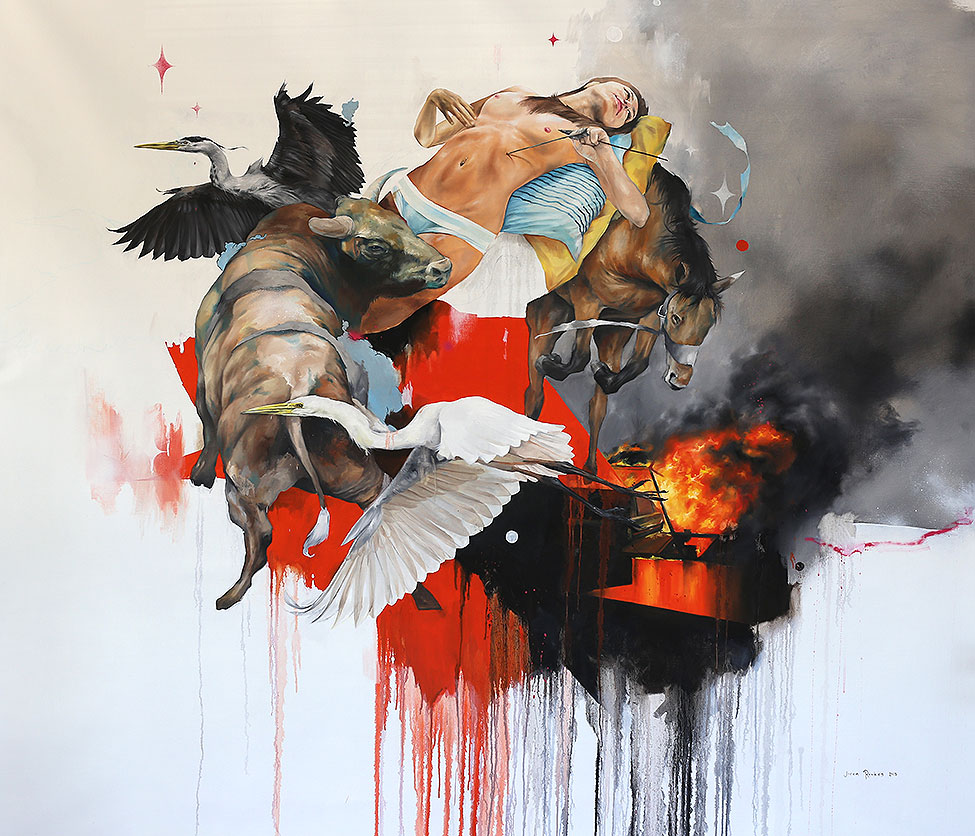
Oil on linen
76″ × 70″
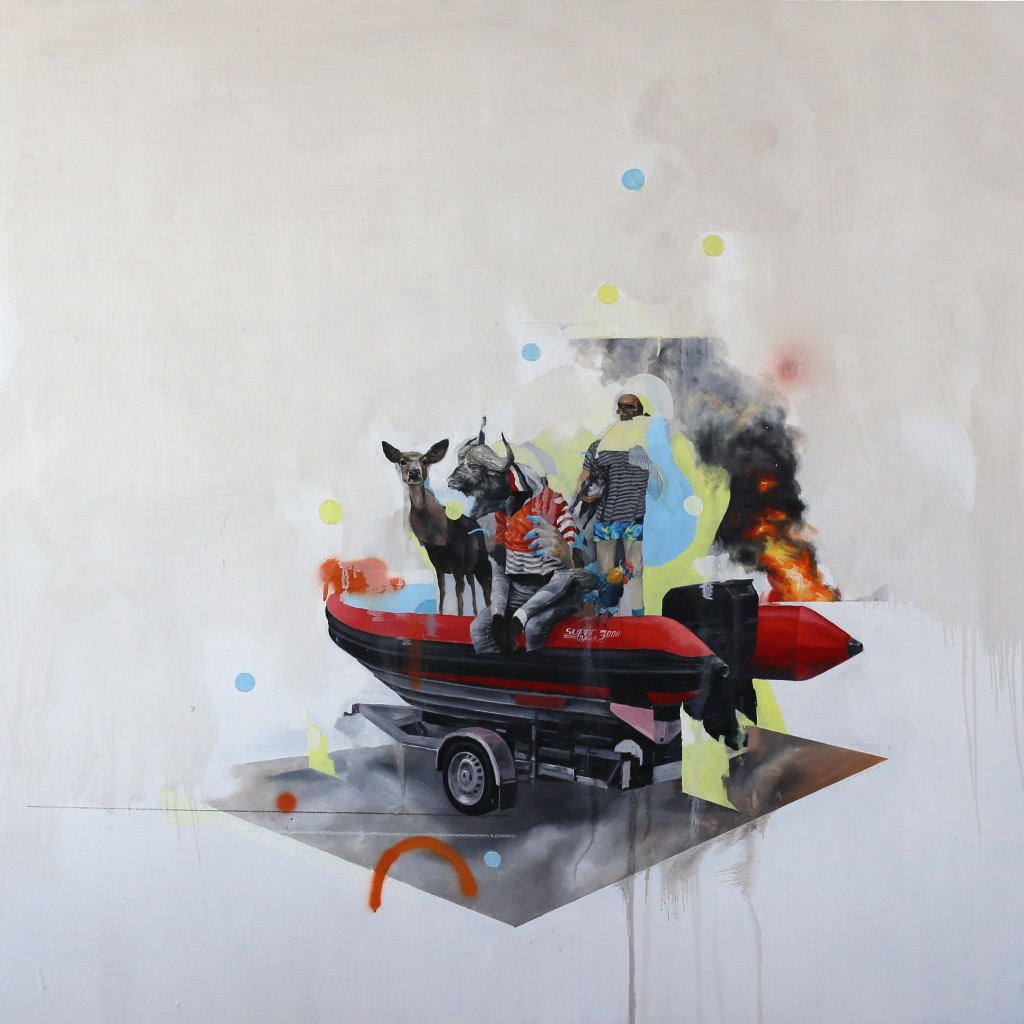
Oil on linen
46″ × 46″
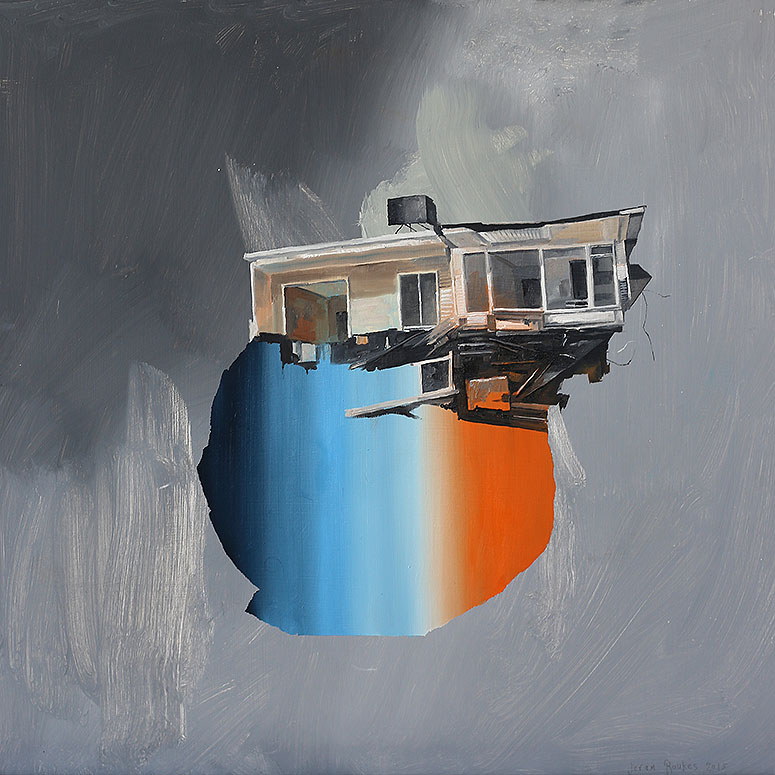
Oil on wood panel
18″ × 18″
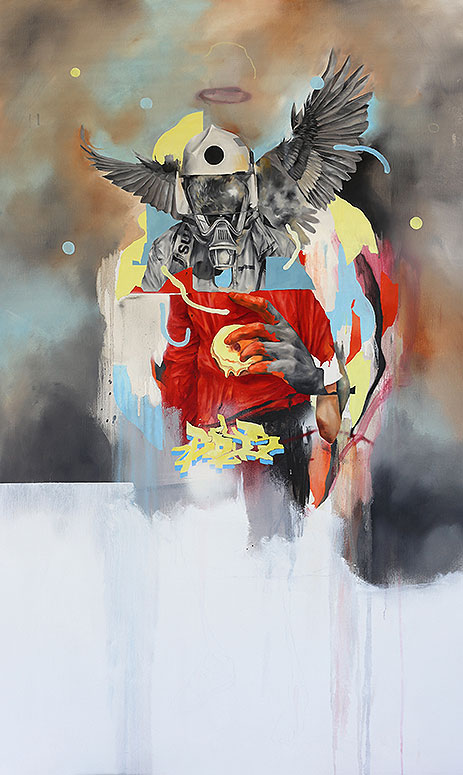
Oil on linen
40″ × 68″
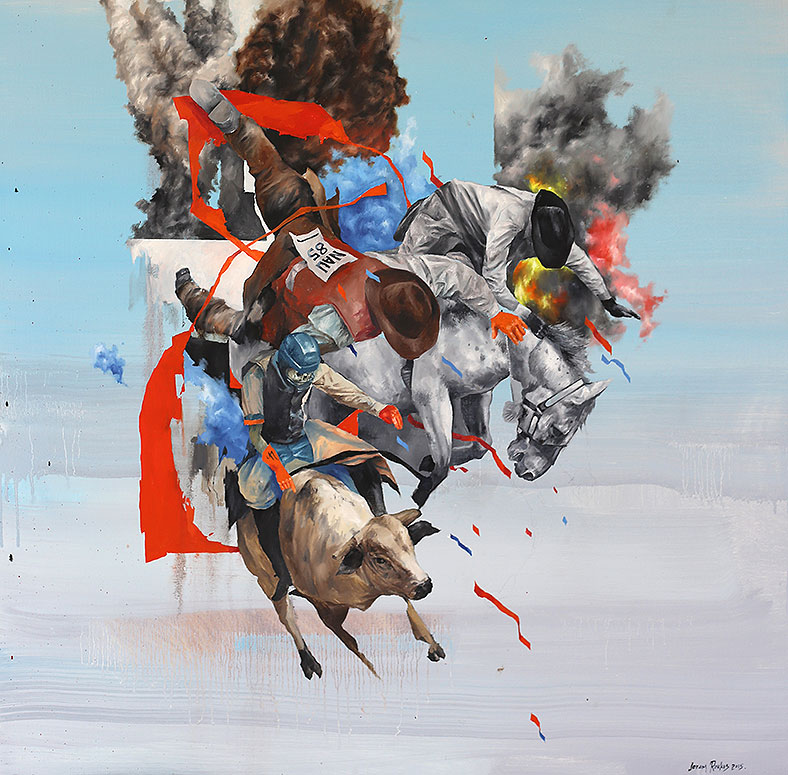
Oil on linen
31.5″ × 31″
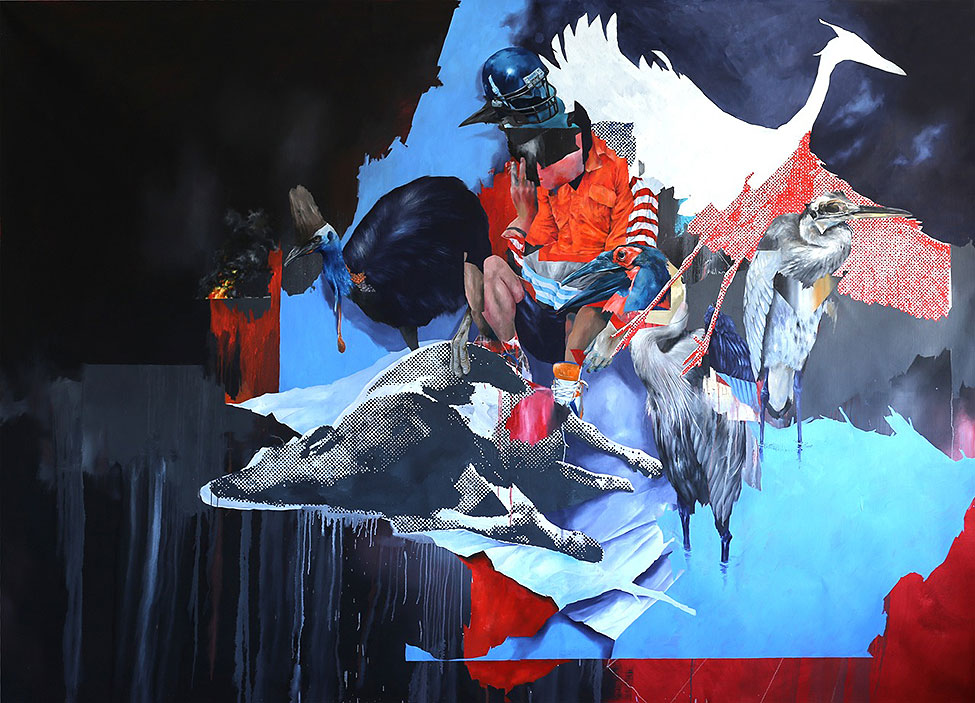
Oil on linen
110″ × 79″
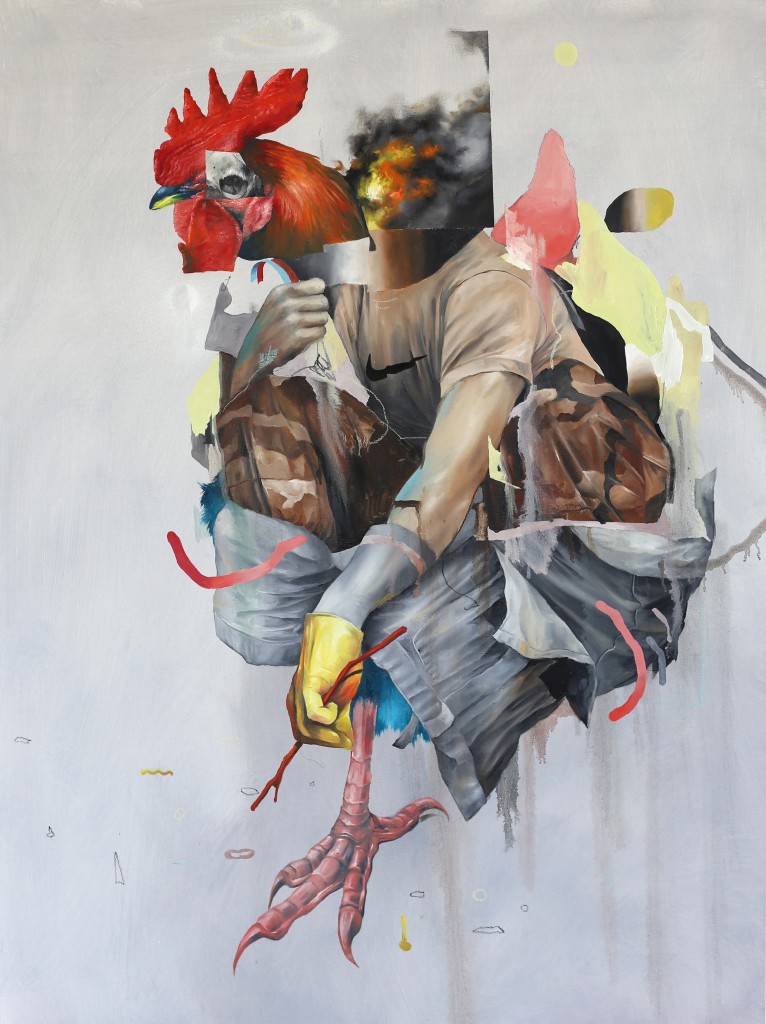
Oil on linen
36″ × 58″